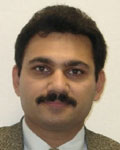Application of formation pressure while drilling in Australia: North West Shelf examples
Dmitry Molohkov A , Andy Pietsch B , Jack Harfoushian A and Shahid Azizul Haq CA Schlumberger Australia Pty Ltd 256 St George’s Terrace Perth WA 6000
B Santos Ltd Santos Centre 60 Flinders Street Adelaide SA 5000
C Schlumberger 300 Schlumberger Drive Sugar Land Texas USA 77478
The APPEA Journal 49(2) 568-568 https://doi.org/10.1071/AJ08041
Published: 2009
Abstract
Since its introduction in the 1950s, the point-by-point wireline formation pressure measurement technique has been successfully used for formation evaluation and reservoir management, and has been an essential input into reservoir models.
In exploration and appraisal wells, where depletion has not yet affected the reservoir, vertical pressure profiling can be used for fluid gradient determination that may be interpreted in terms of fluid densities and contacts.
In a dynamic producing environment pressure measurements can help to identify vertical and horizontal boundaries and communication.
Measurement of pressure distribution along the borehole was historically done with wireline instruments or, in difficult logging conditions, with wireline instruments conveyed by drill pipe.
In some environments, especially in highly deviated and S-shaped wells or unconsolidated formations, drill pipe conveyance of wireline formation pressure testers introduces significant operational risk. Formation Pressure While Drilling (FPWD), introduced in 2003, offers a new cost-effective solution for gathering formation pressure data.
FPWD is a new method to directly measure formation pore pressure as the well is being drilled, extending its application beyond traditional fluid typing, contacts and compartmentalisation determination to well control and drilling optimisation.
The market for FPWD is developing rapidly with all major service companies providing their own implementations of the technology. The next step in the evolution of FPWD technology—sampling while drilling—is not commercially available yet, but this is just a matter of time.
The case history presented in this extended abstract is an example of the application and lessons learned from the FPWD service used in one of the oil fields on the North West Shelf, Australia.
keywords: Formation Pressure While Drilling, FPWD, StethoScope, pressure, sampling, time optimised pre-test, pre-test, sampling while drilling, drilling optimisation, Schlumberger, gradient, depletion, smart pre-test, packer, reservoir, formation evaluation, quartz gauge, drawdown, pore pressure, pressure distribution, wireline, difficult logging conditions, drill pipe, boundary, hydraulic communicaation, supercharging

Dmitry Molokhov received his MSc in chemical engineering from St. Petersburg Technical University. Since joining Schlumberger in 2001, he has worked as a logging engineer for 5 years, working on assignments in Europe, Central Asia and Australia. His current role as reservoir domain champion has him involved in data interpretation and operations support for formation testing and sampling throughout Australia. dmolokov@slb.com |

Andy Pietsch is the chief operations geologist with Santos. A veteran of the petroleum industry, Andy started his career in 1972 as a geologist. During his career he has worked in Zaire, Angola, Libya, Tunisia, Malaysia and throughout Australia. For last 28 years Andy has been working for Santos and is known for his expertise in operations geology, petrophysics, weather and flood prediction, and his passion for new technologies. He is always looking at finding better, smarter and more efficient ways of doing things, and has been instrumental in introducing new technologies throughout his career. Andy.Pietsch@santos.com |

Located in Perth, Jack Harfoushian is a principal reservoir engineer for Schlumberger Data and Consulting Services in Australia. He provides data acquisition support and interpretation development for formation testing and sampling. Jack joined Schlumberger in 1989 as a wireline field engineer and has held assignments in Europe, Africa, Australia and the Middle and Far East. He has worked in a number of positions which have included instructing and training new recruits, teaching advanced courses to senior engineers and also teaching courses to geoscientists from various oil companies. Jack holds a BEng from Curtin University, Australia, and a MEng in reservoir engineering from Heriot-Watt University in Scotland, UK. Jack has given a number of presentations on formation testing and sampling at various conferences. Member: SPE distinguished lecturers committee. harfoushian@perth.oilfield.slb.com |

Shahid Azizul Haq is the reservoir domain head for Schlumberger drilling and measurements services located in Sugar Land, Texas. He is a hands-on petroleum engineer with extensive experience of formation testing and sampling, production logging in horizontal wells, pressure transient analysis, perforating, carbonates and water solutions. Shahid joined Schlumberger in 1988 and has worked in Pakistan, Syria, United Arab Emirates, Saudi Arabia and Qatar before moving into his current position in the USA. Has been on the committees of various SPE and IPTC program and technical reviews. Shahid has to date authored or co-authored 12 papers. He has MSc degree in petroleum engineering from University of Texas at Austin, Texas. Member: SPE. shahid@sugar-land.oilfield.slb.com |


